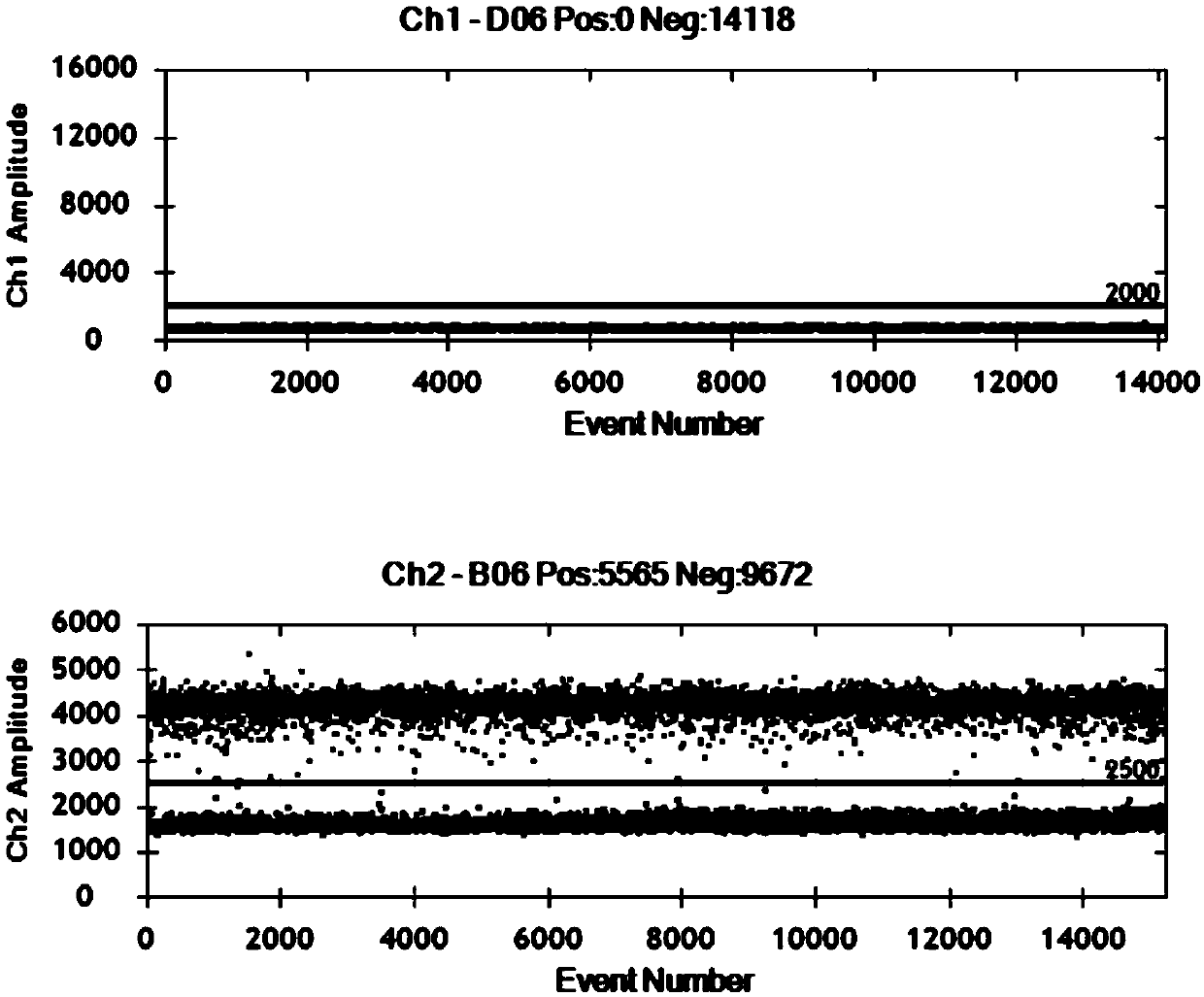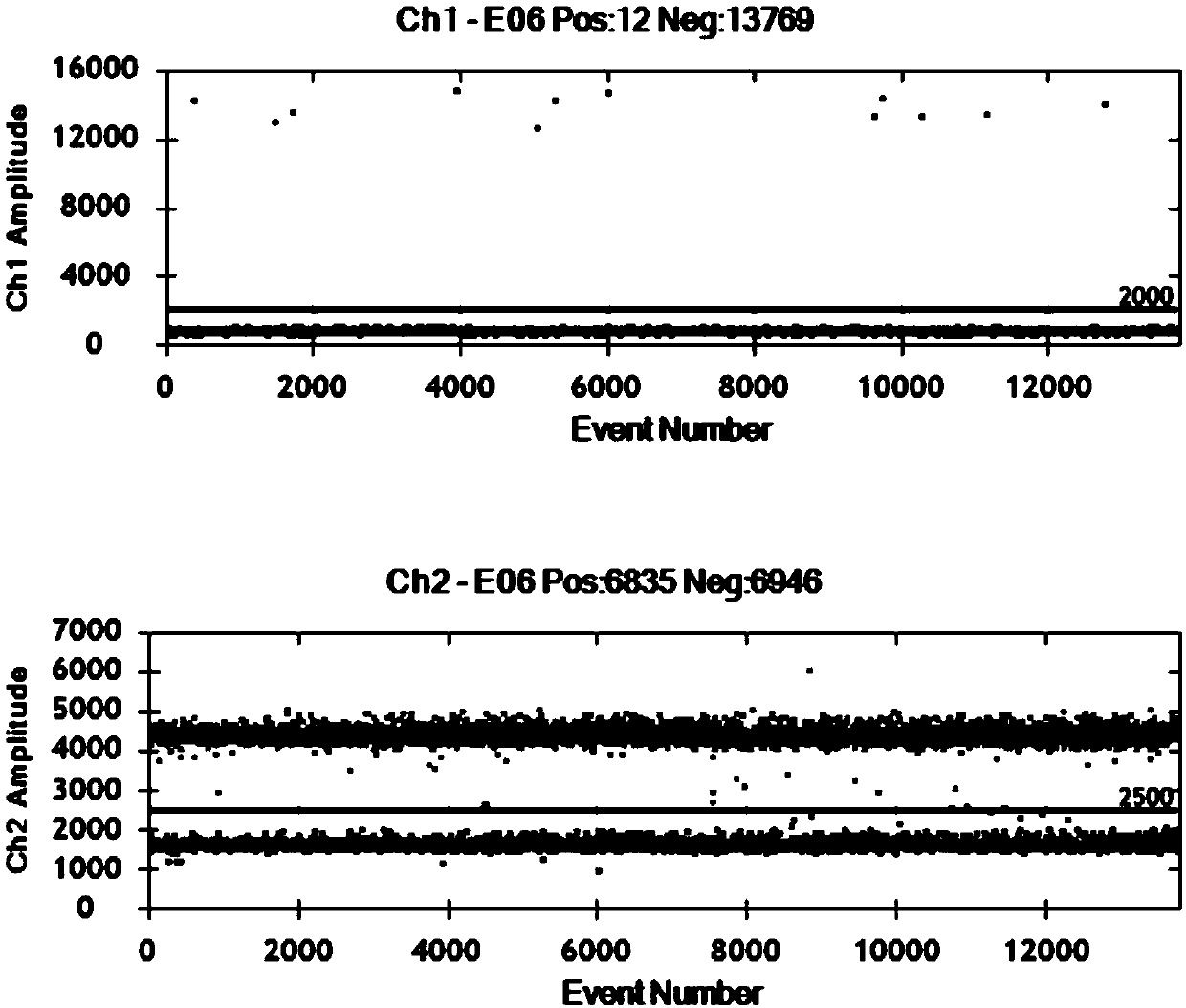Kit used for detecting TEL-AML1 fusion gene
A technology that combines genes and detection reagents, applied in the detection field of TEL-AML1 fusion, can solve problems such as time-consuming, unfavorable rapid detection of clinical samples, false positives, etc., achieve good results, suitable for clinical application and promotion, and high degree of automation Effect
- Summary
- Abstract
- Description
- Claims
- Application Information
AI Technical Summary
Problems solved by technology
Method used
Image
Examples
Embodiment Construction
[0019] The principles and features of the present invention are described below in conjunction with the accompanying drawings, and the examples given are only used to explain the present invention, and are not intended to limit the scope of the present invention.
[0020] 1. Primer and Probe Design
[0021] The primers and corresponding detection probes used to amplify TEL-AML1 are as follows:
[0022] TEL-F (SEQ ID NO: 1): 5'-cctggcttacatgaaccacatc-3';
[0023] AML1-R (SEQ ID NO:2): 5'-gacgtctctagaaggattcattcca-3';
PUM
 Login to View More
Login to View More Abstract
Description
Claims
Application Information
 Login to View More
Login to View More - R&D Engineer
- R&D Manager
- IP Professional
- Industry Leading Data Capabilities
- Powerful AI technology
- Patent DNA Extraction
Browse by: Latest US Patents, China's latest patents, Technical Efficacy Thesaurus, Application Domain, Technology Topic, Popular Technical Reports.
© 2024 PatSnap. All rights reserved.Legal|Privacy policy|Modern Slavery Act Transparency Statement|Sitemap|About US| Contact US: help@patsnap.com










